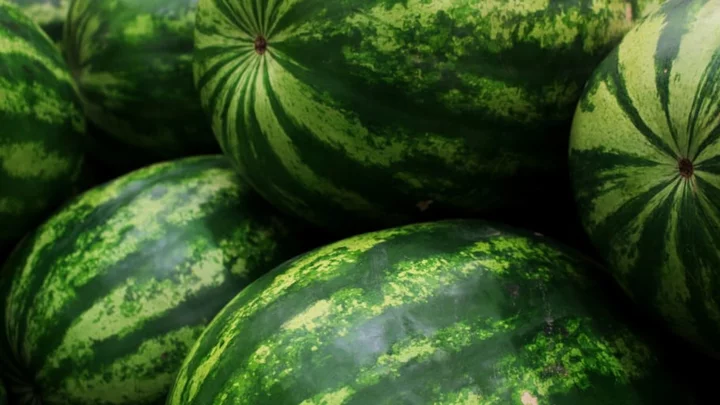
Time Lapse Video Reveals How Long it Takes a Watermelon to Decompose
If you've ever wondered how long it takes a whole watermelon to decay, this timelapse video has the answer.
2023-09-05 05:25
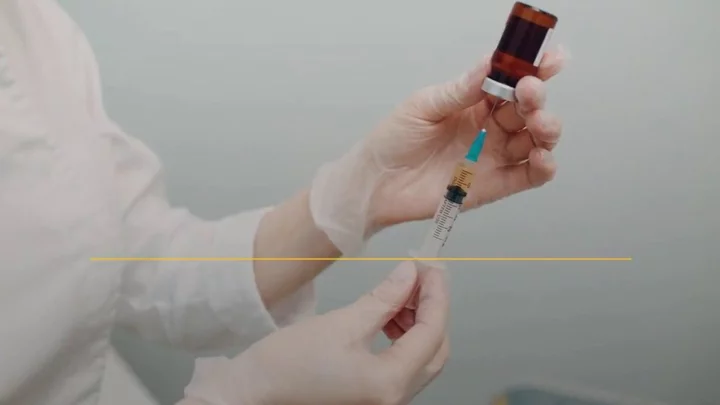
Scientists believe they have found a cure for alcoholism
Alcohol addiction ruins millions of lives every year, but scientists may have found a cure for this terrible affliction. A new treatment for alcohol use disorder (AUD) has been trialled in monkeys with impressive results and, if these translate to human trials, the impact could be monumental. A team of neuroscientists and physiologists from across the US tested a new type of gene therapy to see if they could directly target the underlying brain circuitry associated with sustained heavy drinking. As they noted, in the journal Nature Medicine, people suffering from AUD commonly return to alcohol use even if they attempt to quit. This is largely to do with what’s known as mesolimbic dopamine (DA) signalling – meaning how the central nervous system circuit communicates the feelgood neurotransmitter dopamine. A protein called glial-derived neurotrophic factor (GDNF) is key to keeping these neurons in this reward circuitry functioning. However, experts have found that levels of GDNF are reduced in people with AUD during periods of alcohol abstinence, most notably in a region of the brain called the ventral tegmental area (VTA), as IFLScience notes. Therefore, the researchers decided to test whether using gene therapy to deliver more GDNF to the VTA could help reinforce this crucial dopaminergic signalling and prevent patients from suffering an alcoholic relapse. The team of scientists explained how alcohol consumption in non-addicts prompts the release of dopamine, creating a pleasurable buzz feeling, but chronic alcohol use causes the brain to adapt and stop releasing so much dopamine. “So when people are addicted to alcohol, they don’t really feel more pleasure in drinking,” Dr Kathleen Grant, a senior co-author of the study, said in a statement. “It seems that they’re drinking more because they feel a need to maintain an intoxicated state.” For their research, Dr Grant and her colleagues used eight rhesus macaque monkeys, who were exposed to increasing concentrations of alcohol over four 30-day “induction” periods. The monkeys then had free access to alcohol and water for 21 hours a day for six months, during which they developed heavy drinking behaviours. This was then followed by a 12-week abstinence phase, with the GDNF treatment performed four weeks in for half of the subjects. The gene therapy was delivered using a a viral vector containing a copy of the human GDNF gene injected directly into the primate’s VTA, according to IFLScience. And the results were truly jaw-dropping. “Drinking went down to almost zero,” Dr Grant said. “For months on end, these animals would choose to drink water and just avoid drinking alcohol altogether. They decreased their drinking to the point that it was so low we didn’t record a blood-alcohol level.” The most exciting aspect of their findings is the suggestion that gene therapy could offer a permanent solution for people with the most severe cases of AUD. This will be a welcome glimmer of hope to many, given that some 29.5 million people were diagnosed with AUD in the US alone in 2021, according to the National Institute on Alcohol Abuse and Alcoholism. Of these 29.5 million sufferers, almost a million (894,000) were aged between 12 and 17. It’ll likely be some time before we know for sure whether the gene therapy can be rolled out in humans, but it’s an important first step in tackling this devastating disorder. Sign up for our free Indy100 weekly newsletter Have your say in our news democracy. Click the upvote icon at the top of the page to help raise this article through the indy100 rankings.
2023-09-01 20:57
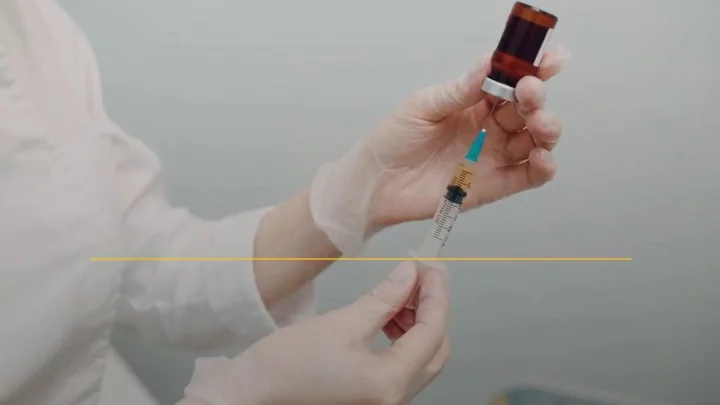
Scientists may have just found a cure for alcoholism
Alcohol addiction ruins millions of lives every year, but scientists may have found a cure for this terrible affliction. A new treatment for alcohol use disorder (AUD) has been trialled in monkeys with impressive results and, if these translate to human trials, the impact could be monumental. A team of neuroscientists and physiologists from across the US tested a new type of gene therapy to see if they could directly target the underlying brain circuitry associated with sustained heavy drinking. As they noted, in the journal Nature Medicine, people suffering from AUD commonly return to alcohol use even if they attempt to quit. This is largely to do with what’s known as mesolimbic dopamine (DA) signalling – meaning how the central nervous system circuit communicates the feelgood neurotransmitter dopamine. A protein called glial-derived neurotrophic factor (GDNF) is key to keeping these neurons in this reward circuitry functioning. However, experts have found that levels of GDNF are reduced in people with AUD during periods of alcohol abstinence, most notably in a region of the brain called the ventral tegmental area (VTA), as IFLScience notes. Therefore, the researchers decided to test whether using gene therapy to deliver more GDNF to the VTA could help reinforce this crucial dopaminergic signalling and prevent patients from suffering an alcoholic relapse. The team of scientists explained how alcohol consumption in non-addicts prompts the release of dopamine, creating a pleasurable buzz feeling, but chronic alcohol use causes the brain to adapt and stop releasing so much dopamine. “So when people are addicted to alcohol, they don’t really feel more pleasure in drinking,” Dr Kathleen Grant, a senior co-author of the study, said in a statement. “It seems that they’re drinking more because they feel a need to maintain an intoxicated state.” For their research, Dr Grant and her colleagues used eight rhesus macaque monkeys, who were exposed to increasing concentrations of alcohol over four 30-day “induction” periods. The monkeys then had free access to alcohol and water for 21 hours a day for six months, during which they developed heavy drinking behaviours. This was then followed by a 12-week abstinence phase, with the GDNF treatment performed four weeks in for half of the subjects. The gene therapy was delivered using a a viral vector containing a copy of the human GDNF gene injected directly into the primate’s VTA, according to IFLScience. And the results were truly jaw-dropping. “Drinking went down to almost zero,” Dr Grant said. “For months on end, these animals would choose to drink water and just avoid drinking alcohol altogether. They decreased their drinking to the point that it was so low we didn’t record a blood-alcohol level.” The most exciting aspect of their findings is the suggestion that gene therapy could offer a permanent solution for people with the most severe cases of AUD. This will be a welcome glimmer of hope to many, given that some 29.5 million people were diagnosed with AUD in the US alone in 2021, according to the National Institute on Alcohol Abuse and Alcoholism. Of these 29.5 million sufferers, almost a million (894,000) were aged between 12 and 17. It’ll likely be some time before we know for sure whether the gene therapy can be rolled out in humans, but it’s an important first step in tackling this devastating disorder. Sign up for our free Indy100 weekly newsletter Have your say in our news democracy. Click the upvote icon at the top of the page to help raise this article through the indy100 rankings.
2023-08-31 19:50
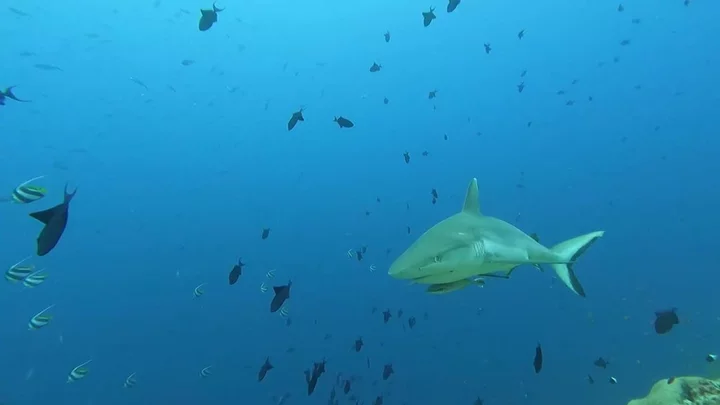
Shark that can live for 500 years found by fishermen leaving scientists baffled
Scientists are shocked having found a shark normally found deep in the Arctic, 4,000 miles away in the warm Caribbean. According to findings published in the Marine Biology journal, the Greenland shark turned up off the coast of Belize in Central America while a team of researchers were out on a boat catching and tagging tiger sharks. Devanshi Kasana, a PhD student at Florida International University, was part of the crew working with local fishermen at the time when she realised that a particular fish on the end of their fishing lines looked like a "rather sluggish creature". She added: "At first, I was sure it was something else, like a six-gill shark that are well known from deep waters off coral reefs. I knew it was something unusual and so did the fishers, who hadn’t ever seen anything quite like it in all their combined years of fishing.” Kasana took a photo of the animal and sent it to her advisor, who said it appeared to be a Greenland shark, which was soon confirmed by experts on the specific species. Another expert thought it might be a hybrid between a Greenland and a Pacific sleeper shark. Omar Faux, a fisherman on the boat, said: "I am always excited to set my deep water line because I know there is stuff down there that we haven’t seen yet in Belize, but I never thought I would be catching a Greenland shark." This is the first time that the large shark has been seen in the western Caribbean, off the world's second-largest coral reef, according to the university. The half-blind Greenland shark is rarely seen and is the longest-living vertebrae animal known, with some age estimates between 250 and 500 years old. Weird... Sign up to our free Indy100 weekly newsletter Have your say in our news democracy. Click the upvote icon at the top of the page to help raise this article through the indy100 rankings.
2023-08-29 19:49

How Richard Mille Watches Became Code for Extravagant Wealth
A Richard Mille Co. watch is a powerful symbol of wealth for anyone who’s in-the-know enough to recognize
2023-08-29 16:56
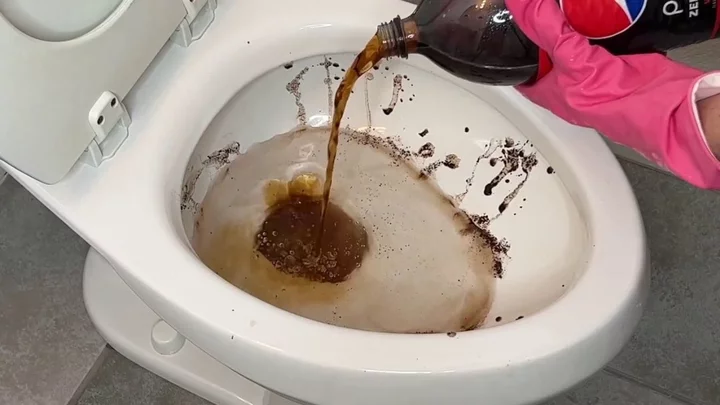
Toilet invented that is so slippy nothing can leave skid marks
A 3-D-printed toilet has been invented and the surface is so slippery that nothing can leave a mark on it. Cleaning the toilet has to be one of the grimmest household chores, but thanks to new material, you may never have to scrub a loo again. The toilet is the invention of Yike Li at Huazhong University of Science and Technology in Wuhan, China, who, alongside colleagues, invented a toilet whose surface is so slippery that nothing stains it and uses less water for each flush. The team created a prototype of the toilet around 10 times smaller than a real one. It was made using 3D printing technology, where particles of plastic and hydrophobic sand grains were fused together with lasers. The surface of the toilet was lubricated with a type of silicon oil that also penetrated the surface due to the complex structure of the material. The team tested the toilet with a variety of substances, including honey, yoghurt, muddy water as well as synthetic faeces. They found that none of the substances stuck to the toilet bowl. Amazingly, the toilet was just as slippery after having been rubbed with sandpaper over 1,000 times, which Li believes is due to the oil being able to penetrate the material of the toilet. Li believes the technology would be suited for settings in which a toilet gets a lot of use, such as on modes of transport and in public toilets. He explained: “The reduced flushing volume would result in less wasted water during transportation to the processing facilities, thereby saving transportation costs.” But, before that can happen, Li says the technology needs to be adapted for use on a full-sized toilet and also needs to be cheaper to make. You can see the toilet in action below courtesy of New Scientist. Nothing can stick to this 3D-printed slippery toilet youtu.be Sign up to our free Indy100 weekly newsletter Have your say in our news democracy. Click the upvote icon at the top of the page to help raise this article through the indy100 rankings.
2023-08-22 20:24
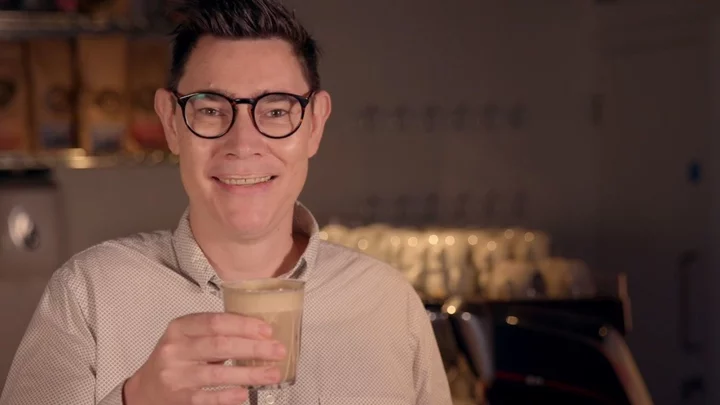
Why you should delay your first coffee of the morning
For a lot of people, coffee is one of the few things that gets them out of bed and out the door in the mornings. But while it’s tempting to whack the kettle on first thing, a health expert has stated that delaying our first coffee of the day could be much more beneficial to our health. Nutritionist Gabi from The Fast 800 urged people to wait at least 90 minutes before getting their first coffee hit [via the Mirror]. Gabi claims that we can all boost energy levels by doing so. In fact, eating on an empty stomach could even cause your body to enter stress mode and release hormones like adrenaline and cortisol. "Supporting your morning coffee routine with some smart practices can be a game changer for your overall well-being,” Gabi said. She recommends drinking water, as well as eating a meal packed with fibre and protein to balance sugar levels. “Elevated blood sugar can trigger inflammation and set us up to be on a blood sugar roller coaster for the rest of the day, thereby tanking our energy supply,” the health guru said. "Within the first hour of waking, our cortisol levels ideally acutely rise and fall in a response known as our cortisol awakening response. This rise and fall of cortisol represents a healthy nervous system and actually has a big influence on our immune health and even the risk of autoimmune development." She also states that delaying coffee for a minimum of 90 minutes promotes high energy levels. Gabi said: "Morning light exposure is a huge regulator of circadian rhythm and light exposure triggers the healthy release of cortisol in the morning to support the body’s natural rhythm. Getting natural light exposure within the first hour or so of waking is a great way to support optimal hormone balance." It comes after it was revealed that the drink also gives us an extra ‘special boost’ as well as just a caffeine hit. Scientists have claimed that the act of drinking a cup of joe gives the body a lift, making us more alert, which can’t be replicated merely with caffeine. Sign up for our free Indy100 weekly newsletter Have your say in our news democracy. Click the upvote icon at the top of the page to help raise this article through the indy100 rankings.
2023-08-21 17:22

How the Maui Wildfires Became So Destructive, So Fast
At least 55 people are dead and hundreds of homes incinerated after tail winds from a hurricane stoked
2023-08-11 18:20

Virgin Galactic Is Set to Fly First Private Tourists to Space
Virgin Galactic Holdings Inc. is poised to launch its first private space tourists on Thursday morning, the company’s
2023-08-10 21:20

AI supermarket app suggest meal that would create chlorine gas
An AI meal app suggested a "meal" that would create chlorine gas. The New Zealand app, created by supermarket chain Pak ‘n’ Save, was advertised as a way for customers to creatively use leftovers during the cost of living crisis. Users enter the ingredients they have in their homes and the app generates recipes. But New Zealand political commentator Liam Hehir noticed it made “aromatic water mix” when he put in ingredients that would create chlorine gas. The bot recommended the recipe as “the perfect nonalcoholic beverage to quench your thirst and refresh your senses”. “Serve chilled and enjoy the refreshing fragrance,” it said, despite the fact that inhaling chlorine gas can cause lung damage or death. Sign up to our free Indy100 weekly newsletter This was not the only dodgy recipe the app came up with. Posting on social media, others weighed in with grim recipes they had found, including "bleach-infused rice surprise" and "mysterious meat stew" made with human flesh. A spokesperson for the supermarket said they were disappointed to see “a small minority have tried to use the tool inappropriately and not for its intended purpose”. In a statement, they said that the supermarket would “keep fine tuning our controls” of the bot to ensure it was safe and useful, and noted that the bot has terms and conditions stating that users should be over 18. In a warning notice appended to the meal-planner, it warns that the recipes “are not reviewed by a human being” and that the company does not guarantee “that any recipe will be a complete or balanced meal, or suitable for consumption”. “You must use your own judgement before relying on or making any recipe produced by Savey Meal-bot,” it said. Sounds like it... Have your say in our news democracy. Click the upvote icon at the top of the page to help raise this article through the indy100 rankings.
2023-08-10 20:18

How Much Free Food Is It Socially Acceptable to Take? Finally, Science Has The Answer
How many cups of coffee are too many cups of coffee to drink in a day when it's on your employer's dime? Researchers dug down to find the answer.
2023-08-05 01:20

A crispy roast potatoes recipe could be the key to life on Earth
A chemical reaction that gives food flavour could have helped evolution, one study suggests. According to New Scientist, the Maillard reaction is when the temperature between sugars and amino acids rises above approximately 140°C. It often occurs in food such as toasted bread, meats and roasted vegetables. Caroline Peacock at the University of Leeds wanted to explore whether it could happen at lower temperatures. To do this, scientists added iron or manganese minerals to a solution made up of sugar glucose and the amino acid glycine. When the substance was incubated at 10°C, the process was sped up by around 100 times. The temperature is said to be similar to the seabed at the edges of continents. Peacock and the team discovered that the Maillard reaction also occurs on the ocean floor, where iron and manganese minerals are often found. If this is the case, it could cause the carbon in sugars and amino acids to be stored in "large, complex polymers that microbes find harder to ingest," Peacock said, as per the publication. Sign up for our free Indy100 weekly newsletter "If you can get your carbon through the 1-metre danger zone [at the top of the sea floor], where carbon generally is attacked and degraded and turned back into carbon dioxide by microbes, that will lock it away from the atmosphere," she explained. The team estimated that the minerals could lock away roughly 4 million tonnes of carbon every year. If this process didn't exist, the atmosphere could have warmed by a further 5°C over the past 400 million years, the study suggested. "This process has such a profound impact on atmospheric oxygen," she says. "Because complex life forms require higher levels of oxygen, as they’re more energetically demanding, we think it’s reasonable to surmise this process had a hand in creating conditions required for complex life." Have your say in our news democracy. Click the upvote icon at the top of the page to help raise this article through the indy100 rankings.
2023-08-05 00:20
